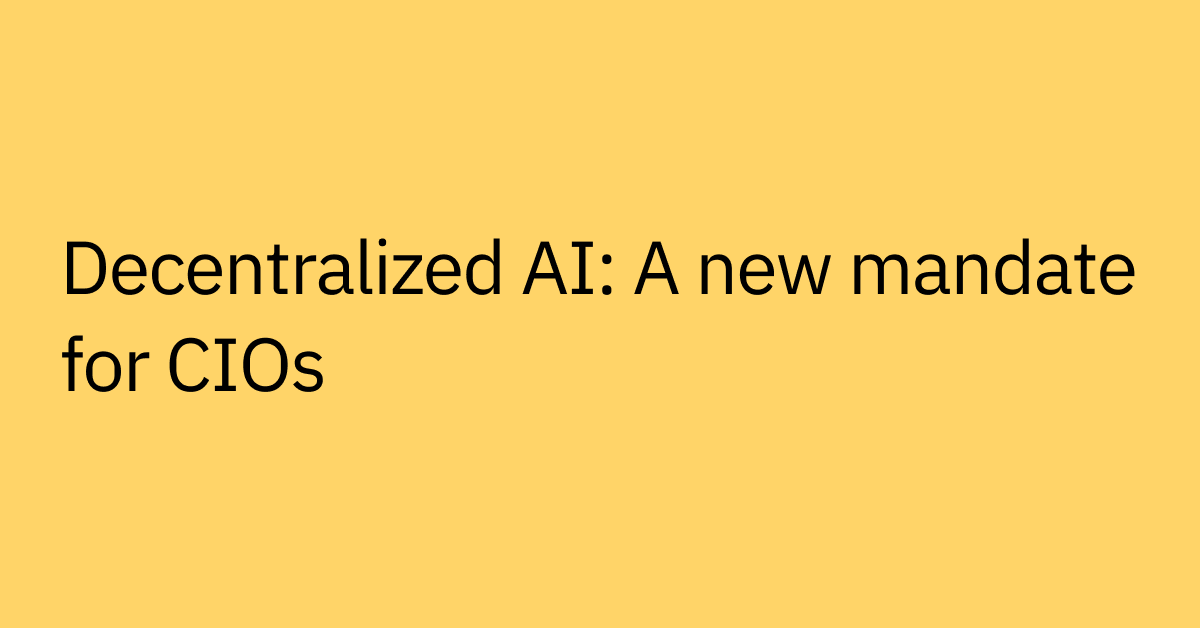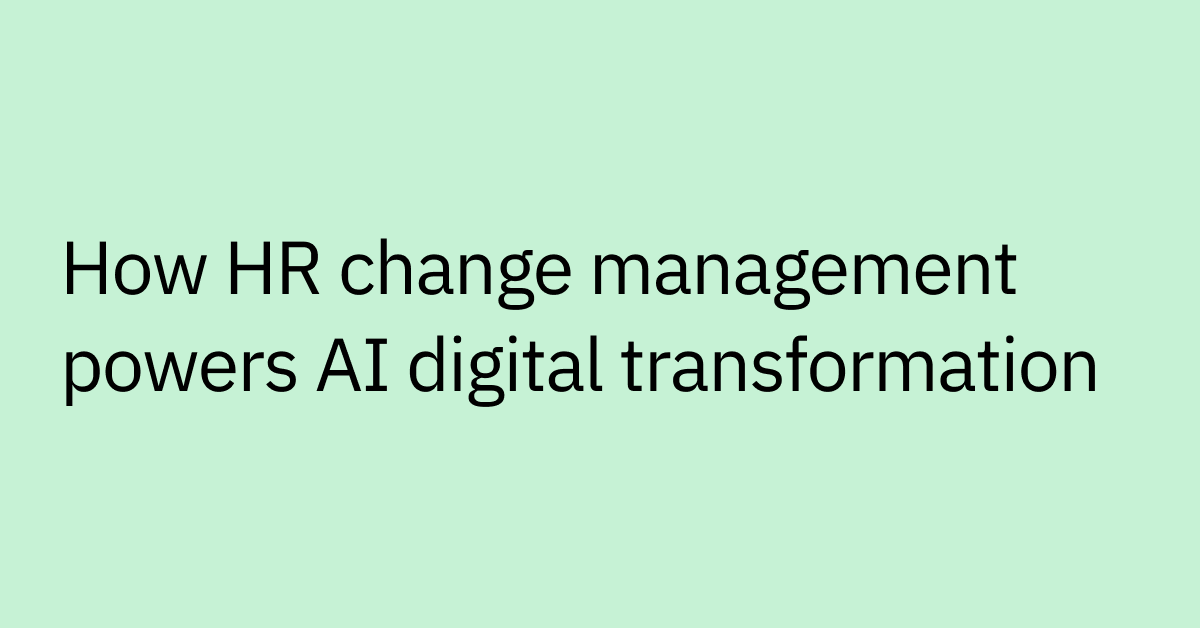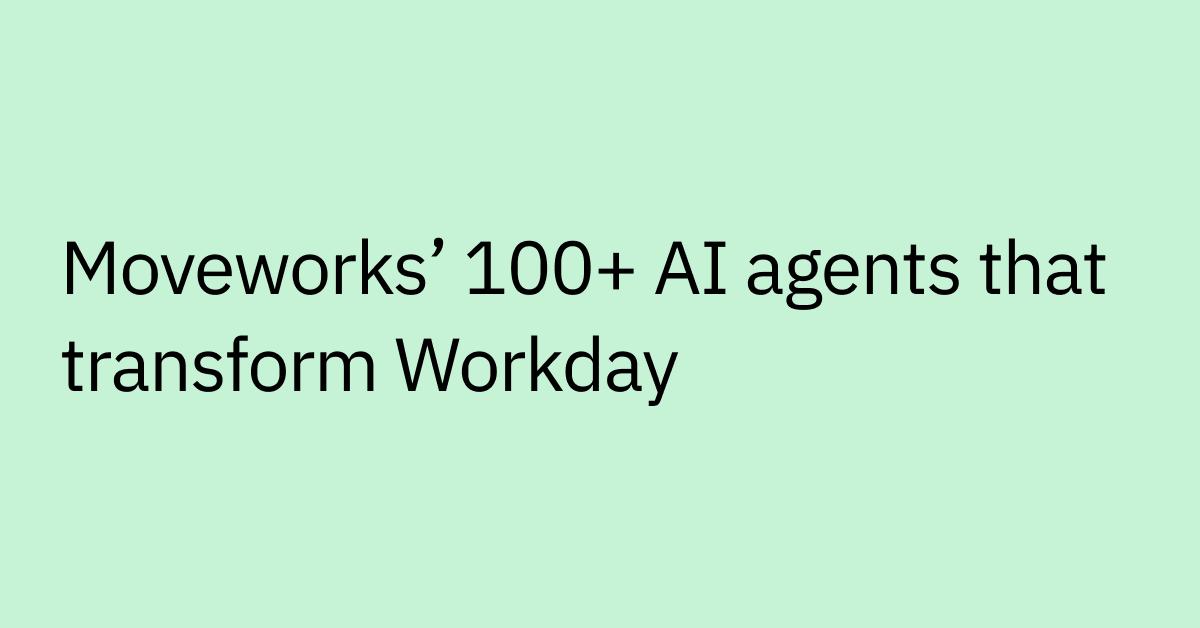Table of contents
Onboarding is one of the most critical moments in the employee lifecycle. It’s the first real experience someone has with your company — shaping how engaged, productive, and committed they’ll be.
So why do only 52% of employees report feeling good about their company’s onboarding process?
Traditional onboarding is often slow, fragmented, and resource-intensive. HR and IT teams juggle countless requests, while new hires face confusion, delays, and inconsistent support.
Especially in large organizations, this manual, high-touch approach drains time and energy, turning what should be a warm welcome into a frustrating bottleneck.
But there’s a better way: AI agents that power personalized, scalable onboarding experiences.
These aren’t static workflows or rule-based bots — AI agents are intelligent systems powered by large language models (LLMs) that don’t just respond to requests — they also interpret what an employee needs, decide the best course of action, and complete the task instantly by integrating with your enterprise tools.
Unsurprisingly, 68% of companies are already using artificial intelligence in their hiring and onboarding processes, and agentic AI is quickly gaining traction too. Now HR and IT leaders are turning to automation to streamline repetitive tasks, deliver instant answers, and support every new hire.
Al agents are able to reduce onboarding friction, support a range of onboarding tasks, and scale onboarding much faster than manual processes. Let's dive into how these intelligent systems can help you get new employees up to speed faster from day one– without overwhelming your HR or IT teams.
What is an AI agent in onboarding?
An AI agent is a system that can plan, reason, and take actions to autonomously on behalf of your team, completing routine tasks like provisioning accounts, answering common HR questions like “What’s our PTO policy?”, and routing approvals for items like software access or equipment requests.
While AI agents can be added to a variety of systems, employees most commonly interact with them through talking with agentic chatbots or AI assistants to find information and take action across enterprise applications.
In onboarding, employees use an AI assistant powered by AI agents that can quickly manage requests and surface information to ensure employees have what they need on day one with little to no manual intervention.
Here’s what this could look like:
AI agents send a welcome message to the new hire.
They provision accounts and grant access to existing systems like Workday, Okta, Jira, and other tools without manual IT intervention.
AI agents can create user accounts, assign permissions, and ensure the new hire is added to the right distribution lists and collaboration tools.
AI agents walk the new hire through benefits selection (health, dental, 401k, etc.) and answer FAQs about benefits and escalate complex questions to HR if needed.
When questions inevitably arise, AI agents can respond to natural language requests from new employees like “How do I enroll in benefits?” or “How can I update my personal information?”
AI agents can interpret intent, decide on the right action, and use integrations with enterprise systems to respond to employees in real time.
AI agents can send reminders for incomplete tasks, helping to keep things from falling through the cracks.
Unlike traditional chatbots or rigid workflows, AI agents use advanced AI to adapt to diverse use cases and provide personlized, context aware answers. They analyze employee requests, pull relevant context, and can take action instantly.
So, when a new hire asks, “How do I access the VPN?”, an AI agent might:
- Check the employee permissions to confirm eligibility
- Verify access permissions by role through Okta or Azure AD
- Deliver a setup guide or trigger an automated provisioning flow
- Track the status of each provisioning step until completion
Employees typically interact with AI agents through chat platforms and virtual assistants, but AI agents also power automations for developers building custom workflows.
Since they plug directly into your company’s most important systems, like human resources information system (HRIS), identity management, and learning management system (LMS) platforms, an agentic AI platform can become the connective layer that transforms onboarding into a seamless, secure experience.
Learn how to deploy AI agents to your ecosystem strategically, for maximum impact and adoption.
Why your onboarding process might feel less than perfect
Let’s say Alex, a new hire, starts their first day full of excitement. But within hours, that energy fades. Their laptop hasn’t arrived, they’re locked out of key systems, and it’s unclear whether IT or HR is supposed to step in. Sound familiar?
That’s the reality in many companies today. Even when parts of onboarding are technically “automated,” experience still breaks down — because those automations are fragmented, brittle, or siloed. The process often includes:
- Manual oversight and follow-ups
- Batch processes that slow things down
- Siloed teams passing tasks back and forth
- Limited global support
Here are common hiccups you might recognize:
- Missed steps: New hires skip critical tasks like signing forms or completing training because instructions are unclear.
- Slow provisioning: System access takes too long due to backlogs or manual approvals.
- Repetitive questions: New hires flood IT and HR teams with the same FAQs — “What’s the PTO policy?” or “How do I set up my laptop?”
- Disjointed handoffs: Gaps between HR and IT lead to confusion and longer resolution times.
- Disconnected global teams: These can complicate consistent onboarding experiences and employee integration and often lack multi-lingual support.
And then come the hidden costs:
- Disengagement: New hires feel unsupported, which may make them more likely to churn, impacting retention.
- Shadow IT workarounds: Employees bypass protocols, creating security risks.
- More support tickets: IT and HR professionals get bogged down answering the same questions repeatedly.
- Slow time-to-productivity: Delays in access or information impact how quickly new hires can get rolling.
Manual onboarding is time-consuming and struggles to keep up with today’s hybrid and remote workforces, where employees may never meet their support teams in person.
Without streamlined workflows and cross-team collaboration, the first-day experience suffers — and so does your team’s bandwidth.
How AI agents reduce onboarding friction at every step
AI agents step in to minimize delays, confusion, and manual overhead across each onboarding stage. Here’s how they make an impact:
Day one setup
On their first day, new hires need fast access. AI agents can help by:
- Provisioning core systems like email, apps, or HR tools based on the employee’s role
- Resolving common real-time issues like login errors or password resets
- Escalating issues to HR or IT when requests fall outside automated resolution paths
That means less time troubleshooting and more time contributing to strategic initiatives, enhancing employee engagement, and building a great workplace culture.
Week one tasks
Throughout week one, AI agents can:
- Push reminders for training sessions and compliance modules.
- Surface benefits enrollment details.
- Guide employees through step-by-step onboarding tasks based on completion status.
Thanks to integrations with LMS and HRIS platforms, everything stays organized and easy to follow.
30/60/90-day check-ins
Long after the first week, onboarding AI agents continue to add value:
- Collecting feedback and conducting surveys – helping you flag disengagement early
- Sending reminders to employees for uncompleted forms or overdue tasks (e.g., “Your compliance training is due Friday — here’s the link.”)
- Providing HR visibility into areas that may indicate onboarding friction
This sustained, intelligent support helps you improve the new hire experience, reduce retention risk, and accelerate time to productivity.
Common onboarding tasks AI agents can handle
There’s a long list of high-touch, repetitive tasks that AI agents are able to easily take off your IT and HR teams’ plates when it comes to onboarding:
- System provisioning: Initiate account set up and access to tools like email, Slack, Salesforce, or Workday, without waiting on a ticket.
- Equipment delivery tracking: Help new hires track their laptop or badge shipments, so IT doesn’t have to chase updates.
- Benefits enrollment and reminders: Surface relevant benefits information at the right time, with automated nudges to keep employees on track.
- Policy acknowledgment and document access: Help employees find, review, and confirm critical documents — and track completions automatically.
- New hire paperwork: Guide employees through tax forms or direct deposit setup, and other paperwork — reducing errors and back-and-forth.
- Training and compliance nudges: Remind employees to complete required courses based on role or region, helping to avoid deadlines being missed.
- Role-based onboarding workflows: Assign tools, teammates, and tasks based on permissions and job function — all able to be triggered automatically.
- Access and equipment approvals: Route requests to the right approver instantly, without clogging inboxes or delaying day-one readiness.
By handling these tasks intelligently and at scale, AI agents help your team deliver a more consistent, personalized onboarding experience — while significantly reducing manual workloads.
Why AI agents can scale onboarding better than manual workflows
Traditional onboarding struggles under pressure. As your company grows, so do the moving parts — more systems to configure, more roles to personalize, and more questions to answer. Manual processes and rigid workflows quickly hit their limits, resulting in:
- Inconsistent onboarding: Not every employee gets the same experience. Some new hires get white-glove support while others are left waiting.
- Overloaded teams: HR and IT spend hours answering repetitive questions and managing access.
- Limited personalization: One-size-fits-all workflows overlook differences in role, location, or employment type.
An Agentic AI Assistant— which uses AI agents to can reason, plan, and take action independently — helps to flip the script on traditional onboarding by offering:
- 24/7, real-time support across channels like Slack, Microsoft Teams, and web browser
- Multilingual, region-aware responses to support global workforces
- Contextual understanding — understands the difference between a contractor in the U.K. and a full-time engineer in the U.S.
- Intelligent workflows that manage tasks instantly without handoffs
- Scalable HR support that grows with your business, not your headcount
This shift from reactive support to AI-driven onboarding and proactive experience management makes it possible to onboard thousands of employees with the same level of speed, accuracy, and care. And it works at scale:
- One-stop support for IT and HR: Palo Alto Networks uses an agentic assistant to help automate thousands of issues monthly. Its integration into platforms like Slack further enhances accessibility and drives its own adoption by proactively addressing a wide range of support issues where employees are already active.
- 90% say the bot was helpful in their first week: At Ioandepot, introducing an agentic assistant during onboarding significantly reduced the burden on the IT team by providing a centralized resource for new hires to seek help. Unlike typical corporate email open rates, over half of the employees actively interact with messages sent via the assistant.
Reimagine onboarding as a continuous experience with AI
Great onboarding doesn’t end after the first week. It’s an ongoing experience that adapts to each employee’s journey. But traditional onboarding often drops off too soon, leaving new hires without the support or guidance they need to be successful.
Moveworks AI Assistant platform transforms onboarding by combining automation, personalization, and real-time support — helping employees ramp up faster and feel supported every step of the way.
By integrating with your existing HRIS, ITSM, and collaboration tools, Moveworks is able to handle onboarding from day 0 to day 90. That means employees can:
- Get instant answers to HR and IT questions — from benefits policies to software access — without waiting on a ticket.
- Complete onboarding tasks automatically — like setting up direct deposits, updating personal info, and tracking progress.
- Start working with confidence, thanks to secure, role-based access to systems and tools from day one.
- Receive a consistent experience across languages and locations, with support that adapts to time zones, employment type, and region.
Empowering your leaders, Moveworks gives you real-time visibility into what new hires are asking, where they’re getting stuck, and how to proactively improve the onboarding journey.
By automating routine work and helping to surface the right information at the right time, Moveworks enables a seamless onboarding experience that scales with your business — without overloading your HR and IT teams.
Ready to deliver faster, more consistent onboarding — without overloading your team? Learn how Moveworks makes it possible.



